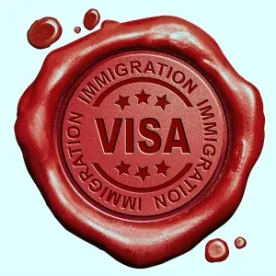The L Visa for Intracompany Transferees is reserved for persons who have been employed by a business entity outside the United States for at least one full year in the preceding three years in an executive, managerial, or specialized knowledge capacity, and who are now being transferred to the United States to serve in an executive or managerial (L-1A), or specialized knowledge (L-1B) capacity for a branch, affiliate, subsidiary, or parent of their overseas employer. As a result, the L visa represents an excellent way for a foreign company to establish its presence and brand in the United States by relying on its own institutional capital, namely, its most talented managers and leaders.
Qualifying Corporate Relationship
Fundamental to the L visa category is the ability to document the corporate relationship between the overseas entity and the sponsoring employer in the United States. The requisite corporate relationship can be documented by providing company annual reports that detail the corporate infrastructure; corporate formation documents; recent financial documents and tax returns; company organizational charts and other similar documentation for both the foreign and the U.S. entities. In certain instances, affidavits by senior company representatives may be acceptable.
It is important to keep in mind that both the foreign entity and the U.S. entity must be “active” in order to qualify for an L-1 visa. This means that both entities are engaged in actual business activity; mere registration of a business or office or presence of an agent is insufficient.
Qualifying Employment
In order to qualify, the transferring employee has to have been employed abroad for at least one full year in the past three years prior to filing for L-1 classification. The transferee must have been employed in a managerial (personnel and/or functional), executive, or specialized knowledge capacity for the entity. However, it is important to note that the U.S. position need not be the same as the qualifying position abroad. For example, a company may transfer a manager (e.g., finance department manager) to carry out an executive role (e.g., chief financial officer) in the United States.
Purchasing an Existing U.S. Business
In addition to transferring a manager or executive to an already operational U.S. office (branch) of the foreign employer, it is also possible for a foreign employer to acquire an ownership interest in a U.S. entity already in existence and operational for one year or more, exercise control over that entity, and then use that entity for employing the L-1 beneficiary. An L-1 employee transferred to the United States under this scenario would be eligible for the full initial period of stay for three years (more on this below). The transferring entity can apply for L-1 visas as soon as the purchase is complete (provided other criteria are met), thereby making it an attractive option for organizations with particular timing needs.
Purchasing an existing business may also be particularly appealing because the parent and subsidiary companies need not be engaged in the same area of business; nor is there a size limitation of the company.
Opening a New Office in the United States
A “new office” is defined in the regulations as an organization which has been doing business in the United States through a parent, branch, affiliate, or subsidiary for less than one year. When seeking to transfer personnel from abroad to open a “new office,” an employer must meet additional requirements. New Office L petitions typically involve more in-depth planning and forecasting and are more document-intensive. That said, New Office L visas are a great way for a foreign company to firmly establish their presence within the U.S. economy by leveraging the talent and expertise of its top employees who will lead the new venture under the same international brand name.
Permitted Time of Stay
Normally, an individual coming to the United States in L-1 status is given an initial period of stay of three years. However, individuals coming to open or be employed by a new office are given an initial period of one year in L-1 status, which may be extended at the end of the first year to the usual three year period upon a showing that a manager, executive, or person with specialized knowledge is still needed for the operation.
Visa holders in managerial or executive capacity (L-1A) will be permitted to extend their stay in the United States for a total of seven years; those in specialized knowledge capacity (L-1B) may spend up to five years in the United States. After exhausting the maximum allowed period of stay in the United States in L-1 status, the foreign national would need to spend a full year outside the United States before being eligible to apply for L-1 status. However, if an L-1 visa holder were to spend less than 50 percent of the time in the United States during each calendar year, there would be no cap on the period of stay. Time spent while holding an L-1 visa, although not physically present in the United States, does not count toward the cap on authorized stay.
Path to Permanent Residence
A great advantage of the L visa is that it allows for what is called “dual intent.” This means that a person in L-1 status may also intend to become a permanent resident of the United States without violating the terms of his/her L-1 nonimmigrant visa. In fact, there is a direct path to permanent residence for L-1 managers and executives under the EB-1-C immigrant visa category for Multinational Managers and Executives.
Moreover, the L visa presents an excellent avenue to be able to come to the United States relatively quickly for foreign nationals with pressing concerns with respect to timing. This is particularly relevant for Chinese nationals who have invested through the EB-5 Immigrant Investor Program, as they currently face I-526 adjudication times upward of 17 months and a visa backlog in excess of a year and a half. In total, a Chinese national could potentially experience a wait of four to five years from date of filing before they actually receive their EB-5-based green card. Understandably, such a long waiting period is simply untenable for many applicants whose circumstances require them to come to the United States before such time. If they are able to meet the eligibility criteria under the L visa category, such an individual could receive their nonimmigrant visa and come to the United States within as little as three to four months. And, as explained immediately above, the regulations permit L visa holders to maintain pending EB-5 petitions, making such a strategy attractive for achieving both short term and long term immigration goals.
While seemingly straightforward, L visa petitions can introduce complex issues that take time to resolve. It is therefore imperative that employers seek the help of experienced immigration counsel and allow ample time to strategize a successful L-1 visa transfer.



 />i
/>i

